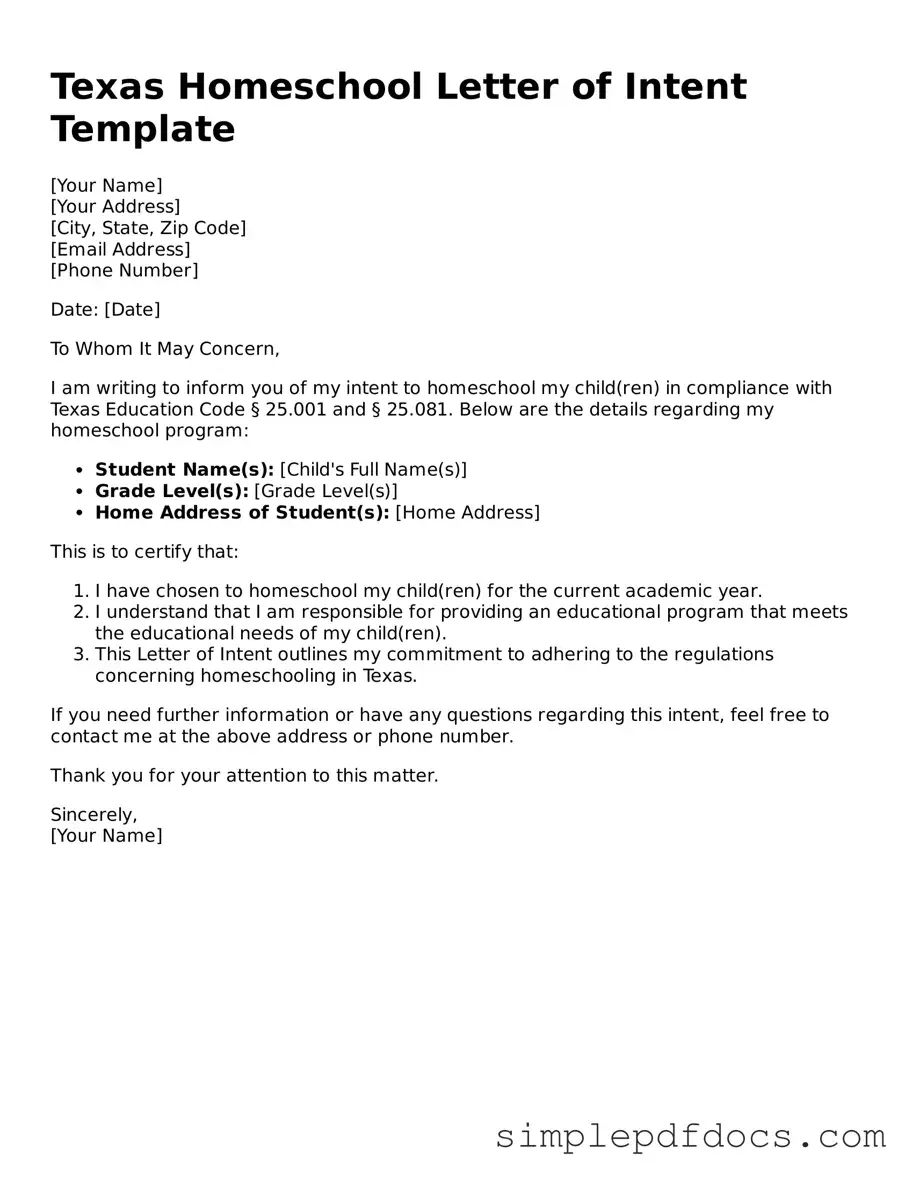Legal Homeschool Letter of Intent Document for the State of Texas
The Texas Homeschool Letter of Intent is a formal document that parents must submit to notify the state of their decision to homeschool their children. This letter serves as an essential step in the homeschooling process, ensuring compliance with Texas regulations. Understanding how to properly complete and submit this form is crucial for a smooth homeschooling experience.
Get Document Here
